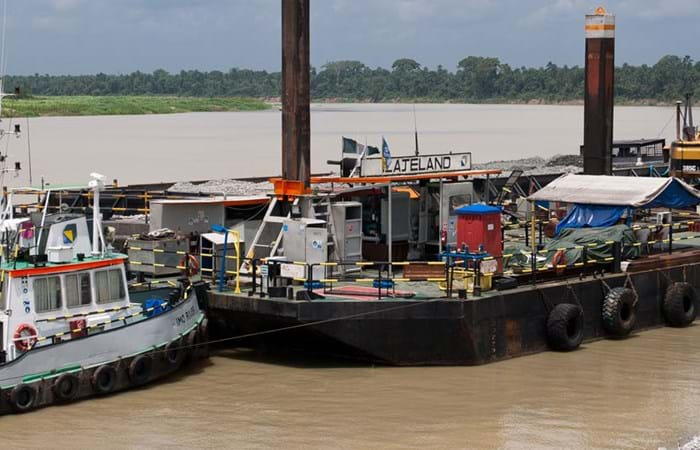The Shell Petroleum Development Company of Nigeria Limited (SPDC) has constructed a gas processing facility in the Niger Delta on the outside bank of a bend of the River Nun at Gbaran Ubie, north of Yenagoa. To facilitate the importation of the processing modules, a Materials Offloading Quay was constructed, including a ro-ro ramp, a passenger jetty and a fire water station.
River bed protection in front of the quay wall and slope protection on the north and south sides of the quay wall was required to prevent scour by the flow of the river and propeller wash from vessels using the quay wall.
Design of river bed and slope protection
The original design of the river bed and slope protection consisted of Reno mattresses placed on a geotextile, which at the time was considered the preferred option with the aim of reducing rock quantities. However, following a design review by Hydronamic, the Boskalis Engineering Department, and given the technical construction considerations recommended by the Boskalis Rock Department, SPDC later agreed to change the design of the bed protection along the quay wall and slope protection below the LWL along the South Bank, and to install protection consisting of rock armor on a granular filter layer rather than Reno mattresses.
Cooperation Pelfaco Limited and NWDM
SPDC awarded the contract for the river bed and slope protection to Pelfaco Ltd. In early January 2011, NWDM was asked to work with Pelfaco as a sub-contractor in order to ensure that the most critical parts of the site at least would be protected before the next rainy season of 2011. Following the successful completion of these emergency works the cooperation was further extended until the whole of the river bed protection along the quay wall and the slope protection on the South Bank was completed.
